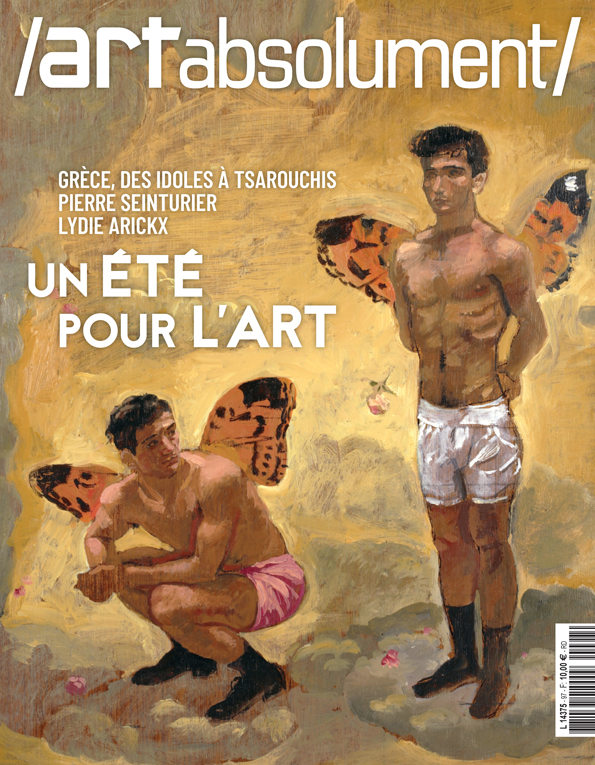Hippolyte Flandrin
1809 (Lyon) / 1984 (Rome)
If Hippolyte Flandrin reinvents the perfection of bodies, preferring the beauty of line to strict anatomical rectitude, he also purifies his backgrounds, treating the landscape in geometric masses bordering on abstraction. His three shipments from the Villa Medici, a requirement of the Fine Arts administration, already imposed a formally exact intransigence on the erudition of the young prodigy. First, in 1834, Polytes, son of Priam, observing the movements of the Greeks towards Troy - a fashionable Homeric source, a return to a simplicity dreamt of before classical Greece, a profile inspired by the friezes of the Parthenon, the latest archaeological veracity - followed, in 1835, by a Young Shepherd, hairless and muscular, posing in the serenity of twilight like a Christ in contempt. His icon, finally, the following year, will be the Naked Young Man Sitting on a Rock, this time with an outrageous tonal purity: blues and beiges.
If Hippolyte Flandrin reinvents the perfection of bodies, preferring the beauty of line to strict anatomical rectitude, he also purifies his backgrounds, treating the landscape in geometric masses bordering on abstraction. His three shipments from the Villa Medici, a requirement of the Fine Arts administration, already imposed a formally exact intransigence on the erudition of the young prodigy. First, in 1834, Polytes, son of Priam, observing the movements of the Greeks towards Troy - a fashionable Homeric source, a return to a simplicity dreamt of before classical Greece, a profile inspired by the friezes of the Parthenon, the latest archaeological veracity - followed, in 1835, by a Young Shepherd, hairless and muscular, posing in the serenity of twilight like a Christ in contempt. His icon, finally, the following year, will be the Naked Young Man Sitting on a Rock, this time with an outrageous tonal purity: blues and beiges.

